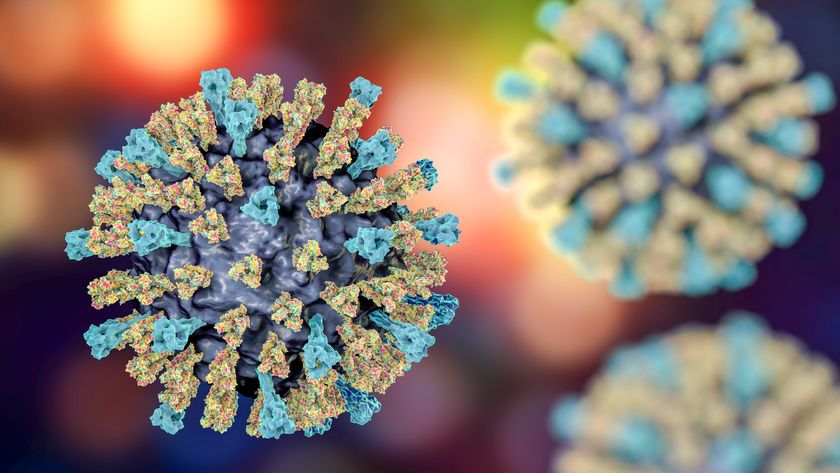Perplexing Panda Pseudo-Pregnancy Pondered

The female giant panda at the National Zoo is pregnant — maybe. That is, she's acting like she's pregnant. She sleeps a lot, makes nests with shredded bamboo, and her hormone levels are elevated.
But then again, she might be faking it.
If a female panda ovulates but fails to conceive, she almost always undergoes a false pregnancy that mimics a real pregnancy to the tee – sans the developing infant. Even those who work with a panda every day often can't tell if she is pregnant until a baby panda pops out.
Scientists aren't sure why this happens to pandas, but in fact this perplexing pregnancy phenomenon isn't uncommon in the animal world.
One shot
In January, scientists at the Smithsonian’s National Zoo in Washington, D.C., artificially inseminated their adult female giant panda, Mei Xiang (may shee-ahng) with semen from the zoo's adult male, Tian Tian (t-yen t-yen).
"We have no way of knowing whether she conceived or not," said Lisa Stevens, curator of primates and pandas at the zoo. "Ultimately we have to prepare as though it's the real thing always. Maybe this is the year."
Sign up for the Live Science daily newsletter now
Get the world’s most fascinating discoveries delivered straight to your inbox.
Pandas only have one shot to get pregnant every year – females can ovulate once a year, and are fertile for about two days. After that, the resulting pregnancy – or pseudo-pregnancy – generally lasts between three to six months.
During the last 40 to 50 days, trainers see the most obvious behavior changes. Female pandas become lethargic and retreat to their dens to sleep more than usual, and they often lose their appetites. They shred pieces of bamboo to make little nests.
"They will also begin to cradle objects," Stevens said. "Like food objects and toys, they'll hold them and cradle them just like a cub."
And their levels of the hormone progesterone also rise, whether or not they are actually carrying a cub.
Scientists don't know why pseudo-pregnancies happen, or if they have evolved for an evolutionary purpose.
"In a sense there's no answer, but there is speculation that perhaps pandas' bodies just rehearse pregnancy all the time," Stevens told LiveScience.
Diet issues?
In the case of pandas, she said, some researchers think the phenomenon may be related to the fact that the bears have evolved to survive on a very low-energy diet. They eat almost nothing but bamboo, which contains barely more energy than it takes to consume it.
But giant pandas aren't the only ones that experience false pregnancies. Many animals, especially carnivores and other bears, can go through the same thing. Even humans can have symptoms associated with a pregnancy, without carrying an actual baby. It's just that in most species, especially humans, it's easier to tell for sure with an ultrasound.
In pandas, the cubs are so small – they are born weighing only 3 to 5 ounces –they are difficult to see with an ultrasound. And the procedure requires the mother panda to cooperate, which can also be tough to accomplish.
For the last three years, Mei Xiang has had pseudo-pregnancies. But in 2005, she successfully gave birth to panda cub Tai Shan. Zookeepers are hoping she can do it again this time.
"We definitely would very much like to have a cub," Stevens said. "It's been five years."
- Do Pregnant Animals Get Morning Sickness?
- Video - Adorable Panda Baby
- Animal Sex: Top 10 Playaz











